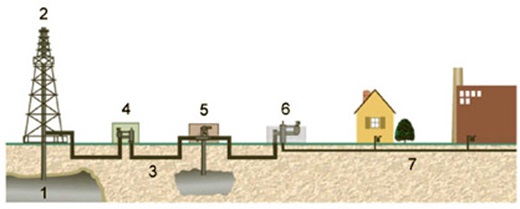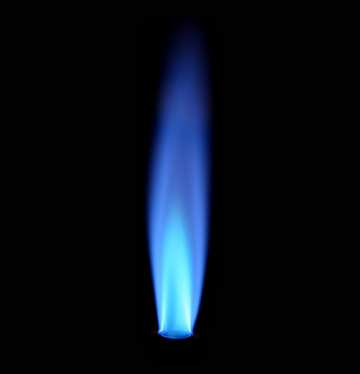Natural gas supply
Puget Sound Energy introduced Washington territory to gas lighting in 1873. Today we operate the state's largest natural-gas distribution system, serving nearly 800,000 gas customers in six counties.
We manage a strategically diversified gas-supply portfolio to reduce financial risks and hold down customers' rates. PSE also controls gas-supply costs by storing gas in large underground facilities, then withdrawing it in winter when customer usage is highest.
All the gas we acquire is transported into our service area through large interstate pipelines owned and operated by another company. Once we take possession of the gas, it is distributed to customers through more than 26,000 miles of PSE-owned gas mains and service lines.
PSE controls its gas-supply costs by acquiring gas, under contract, from a variety of gas producers and suppliers across the western United States and Canada. To obtain gas at the most favorable price, we carefully analyze gas-market trends and conditions, then strategically procure gas under a mix of short-, medium- and long-term contracts. The combined price we pay for natural gas under these contracts is passed along to you at cost, with no mark-up or profit for PSE. Another cost-saving measure involves flexible gas-transportation agreements with suppliers that enable us to selectively purchase gas from favorably priced locations.
How natural gas reaches your home
From the wellhead, natural gas can be moved thousands of miles through large-diameter transmission pipelines. Once a supplier's gas reaches our system, it passes through a variety of different components and infrastructure, including city gate stations where a strong odorant is added (for safety reasons) to give the gas its familiar rotten-egg smell. City gate stations also reduce the pressure of gas as it leaves the larger transmission pipeline and enters smaller utility-owned gas mains.

(1) Deep underground deposits of natural gas
(2) are brought to the surface by wellhead pumps
(3) After the gas is processed and purified, it travels along interstate pipelines
(4) Compressor stations are located every 50 to 60 miles to maintain gas pressure
(5) Natural gas often is stored in large underground reservoirs to help meet spikes in demand
(6) Gas eventually reaches a city gate station, where it is metered and
(7) delivered to customers through a distribution network of local gas mains, small-diameter service lines and, ultimately, customer meters









